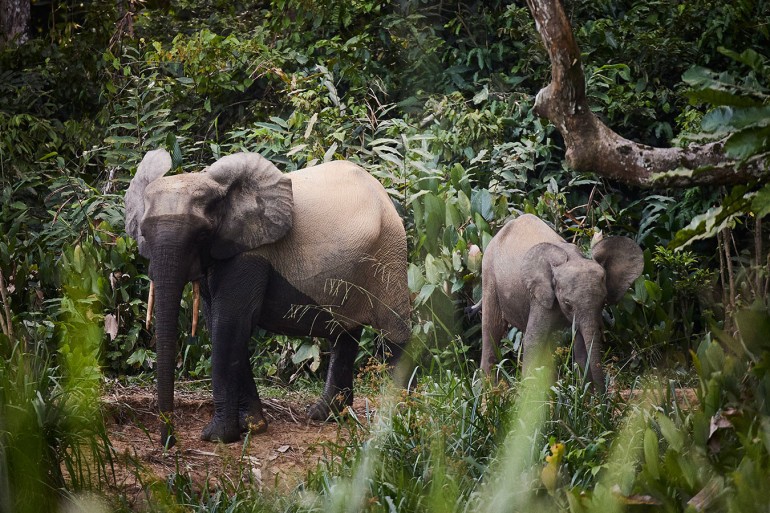

28.10.2022
Published in Mammal Review as part of the thesis of Morgane Scalbert, a doctoral student at Gembloux Agro-Bio Tech, the article entitled "The challenging coexistence of forest elephants and timber concessions" provides a bibliographic synthesis of this subject. Future research priorities are proposed.

With a drastic decrease in their populations over the last decades, forest elephants Loxodonta cyclotis are facing increasing human pressure. Their decline will have serious ecological consequences, as they are key actors in shaping ecosystems. Whilst timber concessions host many mammal species, the interactions between selective logging and forest elephants remain unclear.
Through an extensive literature review, the article discussed the following:
Although human activities have the greatest impact on forest elephant distribution, it is the availability of food, water, and minerals that locally determines their use of the habitat. Under specific conditions, timber concessions may host large populations of forest elephants.
As effective seed dispersers, forest elephants contribute to the regeneration of at least 41 timber species, such as Bobgunnia fistuloides (pao rosa), one of the most expensive woods on the market.
Damage caused by forest elephants is diverse and affects a wide range of species. From branch breaking to bark stripping, at least 61 timber species are used by forest elephants, and little is known about the consequences for the tree's vitality and wood quality.
The interactions between forest elephants and logging are complex and involve many variables, requiring additional research. Nevertheless, this review suggests that timber concessions constitute key areas for forest elephant conservation, provided that low-impact logging and wildlife management are implemented.
As the article is not freely available, you can request to receive the full article via this page.